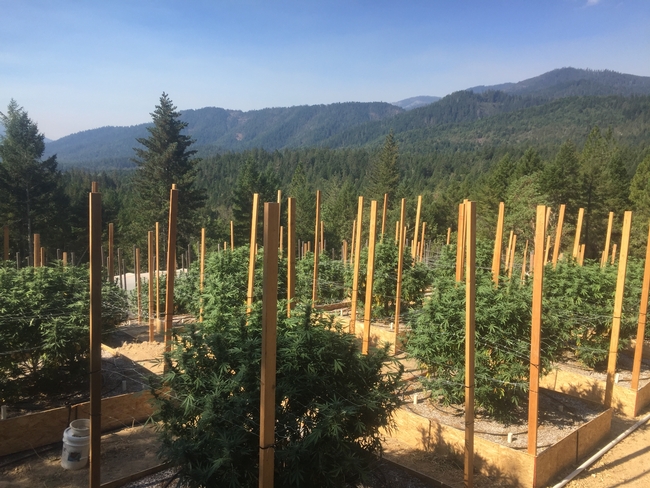Land use change in agricultural frontiers can have far-reaching social and environmental implications, such as habitat loss, water contamination, or worker demographic shifts — particularly when it involves the rapid expansion of a new industry such as cannabis production. A recent study published in Landscape and Urban Planning offers an interdisciplinary perspective on the drivers of cannabis production in rural areas, using interviews with farmers and spatial modeling to uncover key factors.
Led by researchers from UC Berkeley's Department of Environmental Science, Policy, and Management (ESPM) and the Cannabis Research Center, the article “Where money grows on trees: a socio-ecological assessment of land use change in an agricultural frontier” provides a social-ecological systems approach for assessing drivers of cannabis production in Southern Oregon, using interviews with farmers and spatial modeling to uncover key factors.
"Unlike other crops, we have less understanding of where and how cannabis is grown, making it an important area of ongoing research," said Van Butsic, a professor of cooperative extension in ESPM and the senior author of the study.
The researchers interviewed 14 cannabis farmers to identify major themes around their relationships with land use, and used those themes to generate predictors for models of land use change. Most of the interview-derived drivers were significantly associated with cannabis distribution and development, including parcel size, human footprint, distance to the nearest cannabis farm, the density of local cannabis production, clearable land cover, farm zoning, elevation, roughness, and distance to rivers. The interview data also provided insights into the relationship of cannabis with social and environmental dynamics.
“We gained many insights from the interview data,” said lead author and ESPM postdoctoral scholar Phoebe Parker-Shames. “For example, we knew from previous research that cannabis development tends to be clustered, but we understand a little better now that this is related to the ways in which cannabis farmers rely on each other to share knowledge, labor, and navigate uncertainty during difficult policy changes.”
One of the major themes that emerged from the interview data was the environmental stewardship values of the farmers. “There is a large untapped potential for education and management outreach to target farmers who got into this industry in part because of their ability to connect with the land,” Parker-Shames said. “The farmers we spoke to had a genuine desire to learn best practices in an industry without a lot of formal standards for production. I'm grateful that they were willing to share their experiences and insights with us.”
Additional Berkeley co-authors include ESPM professor Justin Brashares and alumni Hekia Bodwitch (PhD '17 ESPM). The study's findings provide valuable insights into the drivers of cannabis production and the environmental stewardship values of cannabis farmers, which can inform environmental policy, regulation, and best practices for sustainable cannabis production.
